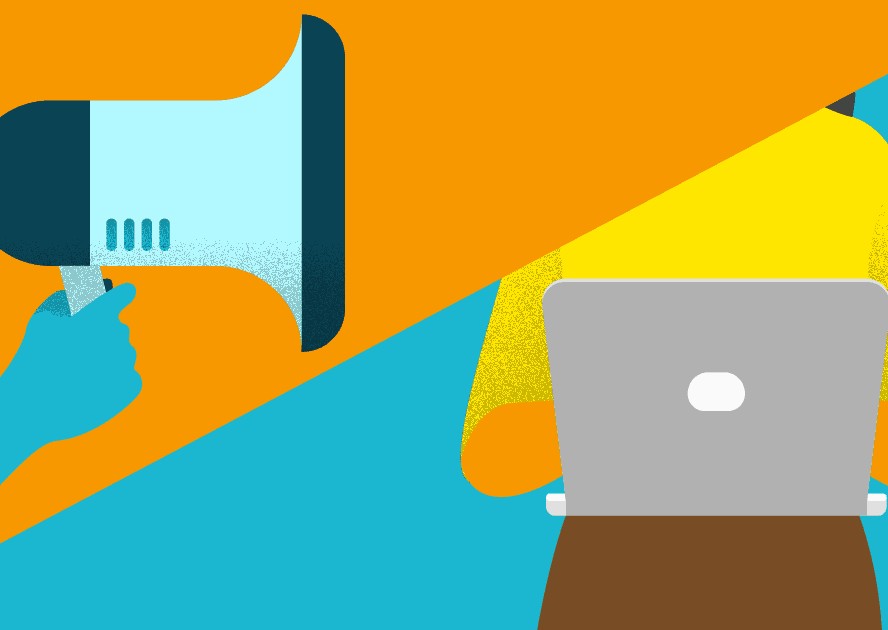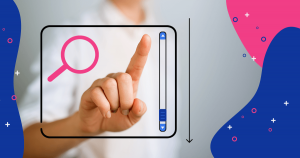Never in its history has the advertising industry seen so many changes in so little time.
New channels, tools, and platforms seem to appear from nothing to become the next big thing.
The audience demands change quickly. The competition finds new ways to engage and attract customers while pushing the advertising market forward.
The idea about these digital ways of advertising is that they do not replace older ones. They add to them. More than ever, knowing the differences in the clash of Digital Marketing vs. Traditional Marketing matters.
So how about understanding better this relationship? This post will go over:
- What is Traditional Marketing?
- What is Digital Marketing?
- How to choose the best strategy for your company?
- How can you use both effectively?
- Where to start?
Download this post by entering your email below
What is Traditional Marketing?
When talking about Traditional Marketing, we are including all marketing channels that came before advertising online was a thing.
These can be separated into three main categories: general ads, leads prospecting and customer relationship. Within them, the most popular approaches are:
- broadcast ads (TV and radio);
- print ads (newspapers and magazines);
- outdoor ads (billboards and fliers);
- brand activation (kiosks and events);
- door-to-door sales;
- direct mail;
- telemarketing.
In Traditional Marketing, it is all about reaching a big general audience and winning by numbers. The more people see your ad, the more leads you attract.
This active way of promoting your brand has its deficiencies. For example, you have to present it and capture attention when most of the public is not open to or interested in buying what you have to offer at that time.
That means traditional channels are more effective in creating brand awareness than actually guiding leads to conversion. It requires more effort and more resources to tie in the whole marketing strategy.
There is only one thing left to note: these channels, in some cases, can be online too. When you directly translate offline strategies to the digital world, they are still traditional, only using more modern tools.
An example would be active telemarketing. Using VoIP doesn’t mean it is digital, it has to have all other concepts from new marketing strategies attached to the practice itself.
What is Digital Marketing?
Digital Marketing is a lot more than your ads on the internet. Well, it began like that, but the concept grew incredibly fast in the last two decades.
The core of it is simple: it is a strategy that uses online tools, platforms, and channels to promote a product or service. All advertising, communicating and engaging with a target audience is done via the internet.
The number of ways of doing Digital Marketing is only growing with time. They are already more numerous and varied than traditional, with the most popular being:
- Social Media Marketing (SMM);
- Content Marketing,
- Search Engine Optimization (SEO);
- Email Marketing;
- Inbound Marketing.
The new digital way of advertising is more focused on efficiency and less on volume. The main goal is to produce ads and relevant content tailored specifically for the profile of people more inclined to buy something from you (your buyer persona).
In that context, Digital Marketing values automation and intelligence. It benefits from a volume of data that was simply impossible to gather and analyze when traditional channels were the only ones available.
That means real-time tracking and the flexibility to adjust campaigns quickly. It is the best way to embrace new channels, adapt to new demands and identify new opportunities on the market.
The focus on data and engagement is actually the core of what makes digital so much different today than traditional marketing was in the past.
Digital Marketing vs. traditional marketing
A lot more can be pointed out when we are talking about what sets these two strategies apart.
Let’s take a look at the main topics that explain better this contrast!
Reaching vs. attracting
One of the main differences between Digital and Traditional is in the perception of what you need to do to be successful. It is a matter of going after your leads vs. inviting them to come to you.
Tradtional strategies put the brand out there in instigating ways to quickly capture the audience’s attention. They need to impact and leave a mark every time an ad is displayed.
Then we have online channels that rely on relationships and connections, a two-way street inviting the public to be part of the brand’s life.
Instead of only reaching, Digital Marketing uses meaningful content to lay a path that attracts new leads and guide them straight to you.
Interaction opportunities
A big difference between both methods is how Traditional Marketing is way more distant than Digital when we analyze brand-client relationships.
Telemarketing is a traditional way of opening a straight conversation with a lead, but it usually works for sales, not advertising. Events are a thing too, but you can’t do them every day.
In Digital Marketing, interactions are vital. You build a closer, more direct and controlled connection with leads.
Also, you know how your strategy is impacting them and you can quickly build up from that.
Results tracking
Seeing the audience’s reaction in real-time is what really sets both ways apart. Think about a TV ad.
How can you know exactly how many people watched it? What they did after watching? How did they perceive your brand and your product?
An impact like that can take time and a lot of effort to measure in traditional advertising. But that kind of data, as we said before, is the core of Digital Marketing.
With a well-structured campaign and good Key Performance Indicators (KPIs) you can test various approaches at the same time, monitor multiple channels and understand which of those works better for your company.
You can also follow trends and do numerous benchmarks to identify new opportunities to attract leads and sell more.
Costs
A Digital Marketing campaign can cost the same as a traditional one, but the main reason businesses are migrating to online advertising rests on an imperative word: optimization.
The difference here is tightly connected to the last point we discussed. With more data and more tools to analyze them, a company can focus its investment on the channels that give the best results.
Before online marketing, most campaigns demanded for big investments in reach but with lower engagement and conversion rates.
Now, it is possible to bet on a campaign with a smaller bugdet that connects with your buyer persona, attracting a lot more leads. You can spend less overall or use the saved money to improve even more your strategy.
Return Over Investment (ROI)
Optimized campaigns generate better results, both in brand awareness and sales. That equation is important for success when investing in marketing.
Traditional Marketing still has its place and may generate a satisfactory ROI. The difference is how Digital opens up more possibilities.
Online channels have various price points and demands that can fit any goal or budget.
It is great for assessing opportunities and testing different results over the investment made — another chance to optimize and sell more while spending less.
How to choose the best strategy for your company?
Looking at all channels you have available in both ways of advertising, it is hard to pick one as the universally best strategy to reach great results.
The cold truth is that there isn’t one right answer. It all depends on what your goals are, how much money you can spend and the resources available to do it — especially time and talent.
But one variable is fundamental in that equation: your target audience. When all your considerations have a target in mind, you can narrow channels, find a coherent voice, optimize costs and bet on what converts the most.
Traditional or Digital, it will all come down to what works better for your public.
How can you use both effectively?
It is important to say that you don’t have to choose one marketing approach over the other.
We, as a society, are still transitioning from consuming traditional media and advertising to go fully digital. There is still space to work on both fronts, depending on age range, social class, and buying habits.
When doing both, what you need the most is integrating Digital’s data tracking and Traditional Marketing monitoring. They need to have individual KPIs, but all centralized in a single, greater goal.
They have to talk to each other too. When there is a seamless connection between physical and digital advertising, a company starts to create a real omnichannel strategy — being available wherever its audience needs it to be.
Where to start?
Now that we talked a lot about differences and similarities, it is time to act!
You have a lot of work ahead of you, but some decisions are needed beforehand, so you can start with the right foot and optimize your marketing campaign from planning to execution. Pay attention to the following tips!
Know your buyer persona better
If what defines your decisions is a client-focused strategy, you have to gather all the information available about them. All that data needs to be considered when creating your persona.
A buyer persona is a fictional profile that takes much more into account than a simple target audience research. Beyond age and socioeconomic status,you need to know more information such as their pains, their desires and their language.
In this context, you also need to know what channels they use the most, how they interact with content, and what they expect from the brands they consume. This is how you find your perfect marketing campaign.
Allocate resources based on data
As we said, there are too many traditional and digital channels to bet on all of them at once. Deciding the best ones for you depends a lot on the data you have.
We are talking about information on your audience, in the competition, and on the market. The more, the better. With intelligence and focus, you can extract a lot of good insights on what works for you.
Always be informed about new channels and technologies
Digital Marketing will be even more prominent and plural in the future. That means more channels, more tools, more platforms changing the way people interact with brands online.
That’s why you can’t stop searching for the next big thing. A recent example is TikTok, a social media app that took only a few months to become a big hit in the US.
The brands that noticed this new emerging platform had a head start planning how to use it to advertise and engage the audience first.
Being quick and assertive in this context will always be an incredible competitive advantage.
Invest in a good partnership
Outsourcing is a perfect solution to have a successful marketing campaign.
There are a lot of Digital Marketing tools, platforms, and services that bring specialized talent to your projects. Some of them are focused on intelligence, helping you with mapping and structuring an optimized strategy.
Others are all about execution: connecting with the audience, producing relevant and frequent content, and combining paid and organic traffic with SEO.
In-house or outsourced, you need to have the talent, the tools and the strategies to improve and optimize your brand visibility.
We talked a lot about Digital Marketing vs. Traditional Marketing, but one thing for sure they have in common: without prioritizing your client and committing to a multichannel strategy, it is hard to be successful either way. Find your space, find the right partnership, know your audience and you are ready to start!
If you want to keep learning about Digital Marketing, read now our content with the 14 metrics that every marketer needs to measure!







